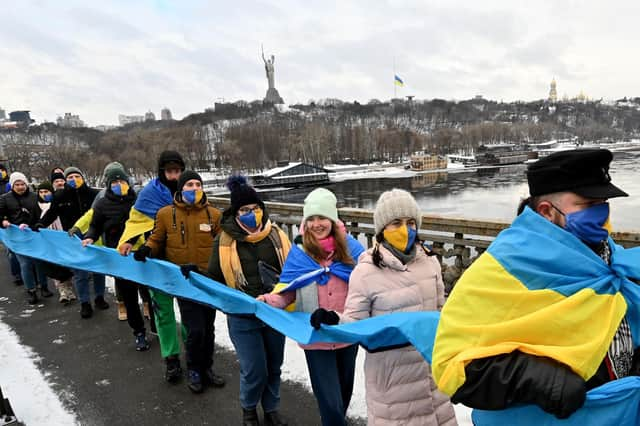REV OLIVER COSS COLUMN: Shall we gather at the Dnieper?


It’s a 12th century compilation, with some notable editions, by Nestor the Chronicler, who sought to draw a straight line between the Biblical period, the evangelisation of the Black Sea and Dnieper River by St Andrew, and the contemporary history that he was able to recall himself.
Influenced heavily by the story of St Cyril and St Methodius (whom Christians remember on the day the rest of the world is buying chocolate and flowers in honour of the legendary martyr St Valentine), who gave to Slavic peoples an alphabet and a written language, and a translation of the liturgy and scriptures that wasn’t in Greek or Latin.
Advertisement
Hide AdAdvertisement
Hide AdWhere the story really hots up is where it relates the tradition of the origins of the Russian Orthodox Church.
Previous generations had seen serious evangelistic efforts, helped by the Moravian saints aforementioned, but no serious rooting of Christianity until Prince of Kiev Vladimir the Great took the Crimean fortress at Chersonesus from the Empire.
He agreed only to vacate it if the emperor allowed his marriage to his sister, Anna.
Vladimir, a product of a pagan polytheism, had followed other monarchs in Scandinavia in deepening the promotion of these folk religions, but would eventually conduct a world tour of faiths, seeking which he might promote in his lands.
Advertisement
Hide AdAdvertisement
Hide AdRejecting Islam and Judaism, among others, and western Christianity as dull, his emissaries found their breath taken away when visiting the Hagia Sophia in Constantinople, today known as Istanbul, and witnessing the Orthodox liturgy.
“We no longer knew whether we were in heaven or on earth”, they reported.
In preparation for marriage, Vladimir was baptised, taking the name Basil in tribute to the emperor.
With his new wife, he returned to Kiev, the capital of modern Ukraine, bringing with him Christian priests from the place of his baptism, and called the entire city down to the banks of the River Dnieper, where the waiting priests baptised his subjects. The ‘Baptism of Kiev’ marks the beginning of a lasting Christianisation of the Kievan Rus, and the foundation of a Church authority based in Kiev, before relocating eventually to Moscow.
Advertisement
Hide AdAdvertisement
Hide AdMore importantly, for modern inspiration, it’s fascinating to note that one of the natal events in Russian Orthodoxy is said to have occurred on the banks of Ukraine’s most famous
river.
It seems unlikely that this old religious bond between Christians of Ukraine and Russia will be enough to contribute to the frantic efforts to secure peace between the two states.
As Transnistria (the area between them) becomes a demilitarised zone, we note that since the 2014 invasion of the Crimea, Christians of the two nations have been pulled further and further apart by leaders on both sides, and by an increasingly punishing diet of appalling news emerging from the region.
Nevertheless, we can hope they will hear again the words of Jesus who said, in the Sermon on the Mount: “Blessed are the peacemakers: for they shall be called the children of God.”